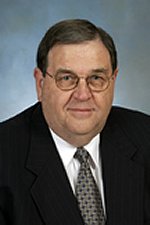Then what happens? As our students matriculate through levels of schooling, music participation becomes more selective. We move from participatory music making as a model to the traditional performance model where perfection is a key goal: no wrong notes and fewer opportunities for creative music expression. Performance ensembles-band, orchestra, chorus, marching band and jazz band-dominate the secondary music curriculum with a general music class or advanced placement theory perhaps added to the curriculum.
For those students attracted to these ensembles, the benefits of this training and experience is expansive and well documented. Some students go on to professional music careers; others carry their extra-musical and musical experiences with them into other careers and as an integral part of their personal lives. We are not advocating changing this component of our nation's music education tradition.
Williams' review of several studies (Williams, 2012) has shown that on average across the country, by the time students advance through middle school to high school, only 20 percent of students are involved in these traditional music classes (also see Elpus and Abril, 2011 and NJAEP, 2014). Many students who participated in music making in the lower grades have since distanced themselves from school music. These are what we call "The Other 80%," the students who no longer are active in the traditional secondary school music program. It is further insightful, that while nationally only 20 percent on average are involved in traditional secondary performance ensembles, a much greater percentage of students sing or play an instrument outside of school. The longitudinal series of studies, Monitoring the Future (Johnston et al., 2010), showed that over some 30 years, an average 57% of students in 8th, 10th, and 12th grades—not just those in music classes—reported that they play an instrument or sing outside of school at least once or twice a month if not daily. In terms of lifelong music making, the NAMM-commissioned Gallup survey (NAMM, 2003) showed that 54% of households have someone that plays a musical instrument and 48% play two or more (see Williams, 2012, for a full discussion of these data).
McAllester's predictions in the 1967 Tanglewood report were incredibly prescient. He stated some 50 years ago:
"We have a splendid beginning in the early grades, when children are sometimes
lucky enough to get acquainted with rhythm and melody on all sorts of simple and
unconventional instruments. They have the thrill of exploring the delights of free
creativity without a long apprenticeship in technique first.... We might entertain the
idea that someone who never does develop skills on conventional instruments could
become a gifted performer on unconventional ones.... Someone who never learned to
read conventional notation might nonetheless become an outstanding composer in
some medium where notation has yet to be invented, or may even be impossible to
invent" (p. 97).
Field of DreamsChange is on the horizon with new playing fields designed within our traditional music curriculum. Music teachers, innovative and self-motivated, are creating new environments for The-Other-80% to explore students' creative music potential. It is being done in many ways: song writing, guitar and ukulele ensembles, Mariachi bands, drumming circles, and various ethnic ensembles. All these activities help bridge music education in school with music in society and use these activities to nurture a greater knowledge and appreciation of the building blocks of music that encourage lifelong music making. They do so with the challenge, like Ray Kinsella dreaming of the return of Shoeless Joe Jackson to baseball, that "if we build it, they will come."
Technology at Bat
An ever-expanding group of teachers is using music technology as a strategy to reach these students. They are using laptops and tablets with software like GarageBand, Mixcraft, and Abelton Live, to engage these "non-traditional" students in ways that nurture creative performing and composing talents. Reading traditional notation and performing on traditional instruments are not, as McAllester suggested, a prerequisite-students' ears become their guide with the music teacher as their music creativity coach.
The website musiccreativity.org was built several years ago as a way to collect the stories of music teachers who were building their own music technology field of dreams; an online forum to share success stories working with non-traditional music students. Like those teachers implementing guitar and ukulele ensembles, the students motivated to make music through technology were discovering ways to bridge school music training with the music they enjoyed in society: rock, hip-hop, DJ mixes, mash-ups, jazz and more.
Go the Distance!
In Rick Dammers' research (Dammers, 2012), he found that some 14 percent of high schools in the nation have some form of technology-based music classes. There are 30 profiles of teachers on the musiccreativity.org website who have been successful using technology to build programs for the non-traditional students. They often start with one class—perhaps even an after-school activity. As the program expands, the profiles show more advanced classes added in music technology, MIDI-based performance ensembles, studio recording and mixing, and even student-managed recording labels. As the voice to Kinsella encouraged, "go the distance," the success of these programs develop their own kinetic energy. Students, some academically or behaviorally challenged, gain self-confidence, increased positive attitudes, and find intrinsic reward from creating and performing music in new and novel ways.
Take the Initiative and Build It?
You may be asking, as Ray Kinsella did, "What's in it for me?" Following the belief shared by most music teachers that if music is important, it is important for everyone, creating a technology-based music class can be tremendously rewarding, both through successfully reaching the "other 80%" student and through exploring the creative pedagogical possibilities offered by technology. Beyond these rewards, the expansion of the music program improves the program's position within the school, since the more students who study music, the more important music will be to the school.
Many technology programs have greatly expanded from their first class offering. These programs have grown large enough with expanded student interest that the school administration begins to view them as integral to overall curriculum and are more proactive in providing new funding and resources to ensure their continual success. In one high school, some 60 percent of students take at least one music technology class. Further, these teachers report that many students continue after graduation to college study in music performance, business, recording, and technology.
You may be surprised to find that your school administrator is more supportive of classes for the non-traditional music student than you think. Dammers' survey of secondary school administrators (Dammers, 2012) found that two-thirds of high school principals surveyed agree that music technology classes would be valuable in their schools and 56% who offer no music technology indicated that it would be feasible to offer such a class in their school.
Whether you use ukuleles or GarageBand, take the initiative and create an experience designed for the non-traditional music student. If you build it, not only the other 80% will come, but the sponsors will as well—the parents and administrators!
References:
Dammers, R. (2012). Technology-Based Music Classes in High Schools in the United
States. Bulletin of the Council for Research in Music Education, 194, 73-90.
Elpus, K. and Abril, C. (2011), "High School Music Students in the United States: A
Demographic Profile", Journal of Research in Music Education, 59(2), 128-145.
Johnston, L.D., Bachman, J. G., O'Malley, P. M., et al (2010), Monitoring the Future:
A Continuing Study of American Youth (8th, 10th, 12th Grade Surveys). Database
accessed 10 September 2011, from
http://www.icpsr.umich.edu/icpsrweb/ICPSR/ssvd/studies?prefix=M.
McAllester, D. (1967) "The Substance of Things Hoped For", from Documentary
Report of the Tanglewood Symposium, Reston, VA: MENC, 96-99.
NAMM (National Association of Music Merchants). (2003, April 21). Gallup
Organization Reveals Findings of "American Attitudes Toward Making Music" Survey.
Retrieved, November 13, 2013, from
http://www.namm.org/news/press-releases/gallup-organization-reveals-findings-american-atti.
NJAEP (New Jersey Arts Education Partnership). (2013, January 28). New Jersey
School Performance Reports. Retrieved, February 8, 2014 from http://njaep.org.
Williams, D. B. (2012). The Non-Traditional Music Student In Secondary Schools of
the United States: Engaging Non-Participant Students In Creative Music Activities
Through Technology. Journal of Music, Technology, and Education, 4(2-3), 131-147.

